Best of Ethiopia: The Historic North and Omo Valley
Tour Details
Description of the Tour
Ethiopia is an African land unlike anywhere else on the continent. With a wealth of unique cultures, incredible ethnic and natural diversity, and some of Africa’s finest historic monuments, the country offers a unique kaleidoscope of experiences – unforgettably revealed here with a trip encompassing the highlights of both the north and the south of the country.
From the colourful buzz of the capital Addis Ababa, we head north of the country, is best known for its striking monuments that date back through medieval times to the dawn of Christianity. You'll visit the monasteries of Lake Tana and the Blue Nile Falls (Africa's second largest), before heading to Gondar to explore castles and palaces that look more European than African.
In the Simien Mountains, meanwhile, you'll have a chance to hike in one of Africa's most dramatic landscapes scouting for unusual local fauna. There's also time spent seeing the incredible rock cut churches of Lalibela – ‘Africa’s Petra’.
From north head to south to the tribal lands of the Omo Valley to mingle with a dazzling array of traditional tribal groups – each with distinctive traits – as they come together at fabulous weekly village markets. But you will also get a chance to get close to some incredible wildlife too, including a lake safari in search of crocodiles and hippos.
There's also a chance to extend the trip to see the remarkable hot springs of Dallol, where geological activity has created a wonderland of brightly-coloured rock formations. In the world, before listening to some of the best jazz in the world.
The difference you make on this trip: Ten trees are planted per passenger on this trip.
Tour Itinerary CO14
Arrival: Bole International Airport
Remarkable Ethiopia Tours will meet all clients arriving at the airport regardless of arrival time.
Tour Itinerary

Day 1 - City Tour of Addis Ababa
We visit the National Museum, which houses some of the country’s historic treasures. The collection of fossils and bones of early hominids discovered in Ethiopia include the 3.5m-year-old remains of Lucy, the oldest hominid every found. We also visit the Holy Trinity Church, Ethiopia’s main cathedral and home to the remains of the last emperor, Haile Selassie. Visit the vibrant Merkato, the largest open-air market in Africa.
Overnight Hotel (B, L, D)
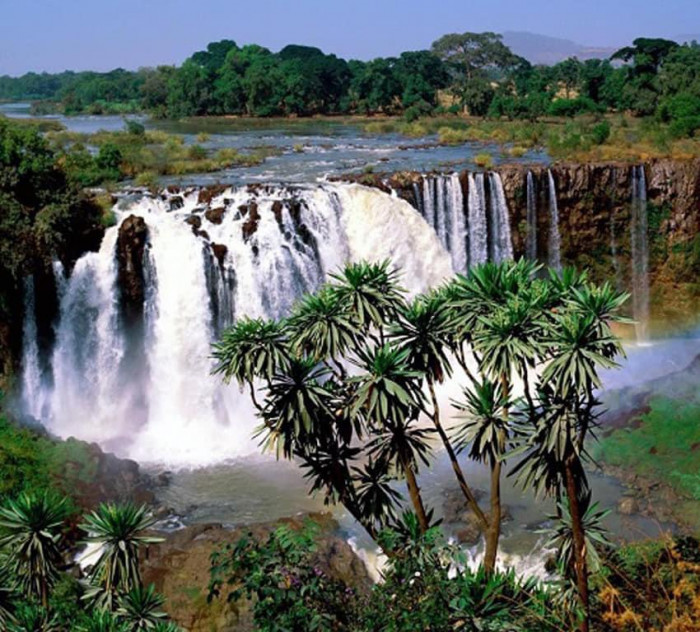
Day 2 - Addis Ababa – Bahir Dar
Today we take a spectacular flight to Bahar Dar. From the air, we can gaze across the extraordinary nature of the Ethiopian Plateau, repeatedly cut by immensely deep gorges.
Bahir Dar - Fly north to Bahir Dar, situated on the shores of Lake Tana. Upon arrival we head out onto the lake to visit some of the impressive monasteries tucked away on islands here. Boat trip on Lake Tana to visit the monastery of URA Kidane Mehret. We travel by boat to visit some of the more remote monasteries and churches, most of which date to the 13th century. The monasteries are fascinating and unlike any others outside Ethiopia, often decorated with bright mural paintings.
Afternoon continue to the Blue Nile Falls, Africa’s second largest waterfall, and explore the area on foot. Blue Nile Falls, locally known as Tis Isat or 'Smoke of Fire. The falls is still an intriguing sight.
Overnight Hotel (B, L, D)

Day 3 - Bahir Dar – Gonder
This morning we drive north to Gondar, the former capital of Ethiopia. Enjoy a scenic drive to the ancient Imperial city, traveling through a fertile landscape of wide open fields; a perfect African tableau punctuated by undulating hillsides and valleys. After lunch, we explore Gondar and visit the castles, which were built in the 17th and 18th century by several generations of Ethiopian kings. Nearby is Debre Birhan Selassie church, which has a sensational angelic ceiling, and the bathhouse of Fasilides where thousands of Ethiopians celebrate Timkat festival every January. Our clifftop hotel has wonderful views over the town.
Overnight Hotel (B, L, D)
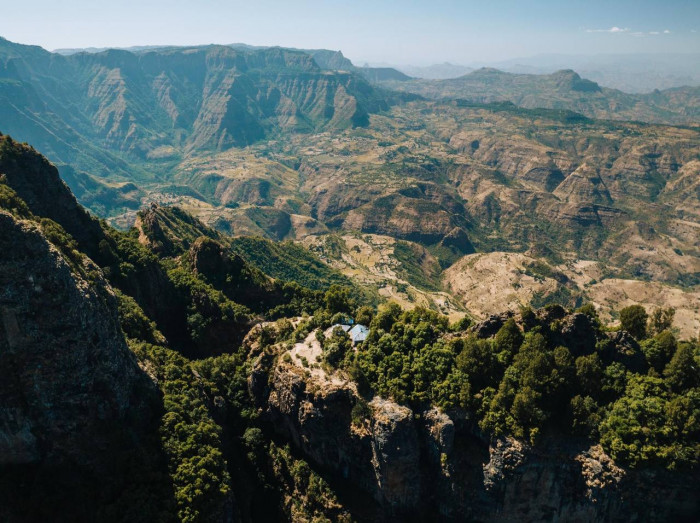
Day 4 - Gondar - Simien Mountains National Park
Simien Mountain National park a UNESCO World Heritage site is a three –hour drive from Gondar Simien Mountain national park, we drive up into the mountains for some spectacular views of this unique ecosystem. The highland plateau is capped by a dramatic skyline of jagged volcanic plugs and split by deep gorges and gullies. On a good day, the views are sensational and the striking towers and formations have been described as the chess pieces of the gods. it also has continual surprises by dozens of Gelada baboons; the area’s distinctive shaggy breed with red over their heart. The maximum altitude we reach is 10,660ft (3,250m).
Overnight Lodge (B, L, D)
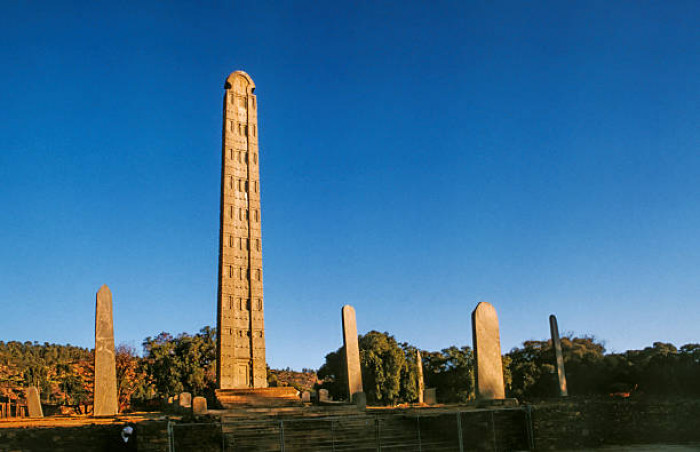
Day 5 - Simien Mountains - Axum
Drive through the mountain range offering extraordinary scenery of the Simiens as we descend towards the Tekeze Gorge. This scenic drive takes us from a height of 10,200 feet down to 4,600 feet. Drive through small villages dotted between the mountain massifs, where people somehow take out an existence in this unforgettable countryside.
Overnight Hotel (B, L, D)
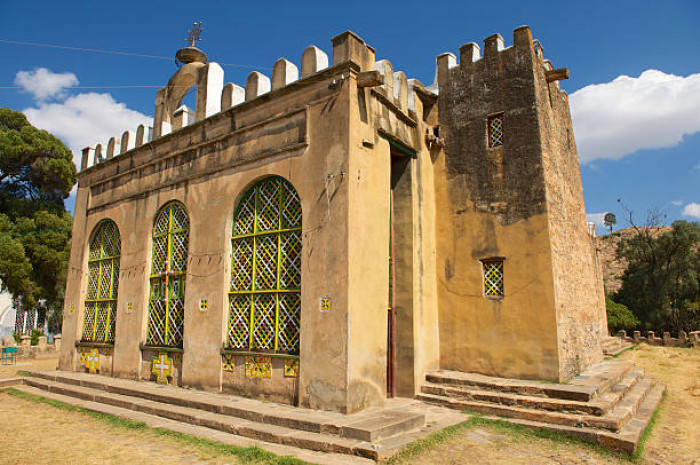
Day 6 - Axum
Axum was the capital of the Kingdom of Axum, the origin of Christianity in Ethiopia and believed to be the resting place of the Ark of the Covenant. The old church of St Mary of Zion was the first church built in Sub-Saharan Africa around 330 CE. Its ruins can be seen in the precinct of the church compound. We visit the monolithic stelae of Axum, the tallest still standing reaches more than 69ft (21m) and the greatest one of them all, once 111ft (34m) high, lies on the ground. It is still, however, the largest monolith ever put up by humans. The subterranean tombs, stone inscriptions of ancient Axumite kings and the small archaeological museum reveal Axumite history. We also visit the Queen of Sheba’s ruined palace who is said to have given birth to Menelik the First, fathered by King Solomon, the founder of Ethiopia's ruling family until Haile Selassie.
Overnight Hotel (B, L, D)

Day 7 - Axum – Lalibela
In the morning after breakfast catch your flight to Lalibela. From the air, we can gaze across the extraordinary nature of the Ethiopian Plateau, repeatedly cut by immensely deep gorges.
Lalibela the most famous town in Ethiopia known for its incredible rock cut churches. A must-see! You can’t go to Ethiopia without stopping at this pilgrimage hot spot. Tour the most famous towns in Ethiopia, a UNESCO-listed World Heritage Site known for its incredible rock cut churches.
Lalibela is famous uniquely for its 11 rock cut churches and therefore have the appearance of being underground. The most famous is Bete Giorgis (St George, patron saint of Ethiopia), carved in the form of a Greek cross. It is exceptionally well preserved and visually almost flawless. Although the churches are remote, they are not short of worshippers: most Ethiopians, certainly of the older generation, are devout Orthodox Christians.
Overnight Hotel (B, L, D)

Day 8 - Lalibela
For the morning we will go to one of lalibel’a beautiful church to attend mass with all the local people and Today in Lalibela is a special day for the church of St Michael you can see how the people still devote. Then we have two choices: Take a morning hike with mules to Mount Asheton, with its 13th century rock-hewn monastery and great views of the town; - OR - Drive to Yemrehanna Kristos, a beautiful church situated in a shallow cave that predates the churches of Lalibela. The drive to Yemrehanna will also give you the opportunity to view the rural countryside and villages of the Ethiopian highlands. Following either option above continue with tour of Lalibela’s churches in the afternoon 5 churches.
Overnight Hotel (B, L, D)

Day 9 - Lalibela – Addis Ababa – Langano
Board your morning flight to Addis and a short drive will take Ethiopian rift valley, stop at Lake Ziway to view the colorful birds continue drive to the brown lake Langano to the Rift Valley Lake Langano. Relax at the Lodge. Lake Langano is safe for swimming.
Overnight Lodge (B, L, D)
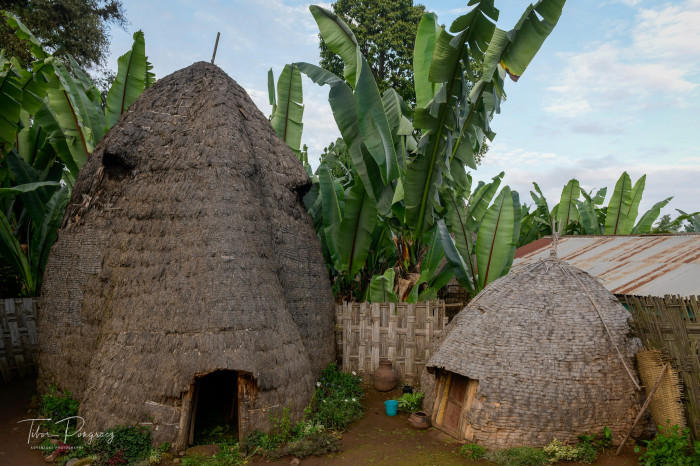
Day 10 - Langano – Arba Minch
After breakfast drive to the lake Awassa to visit the colorful water birds and Fish market, where people are buying fresh fish from Fisher men; Minch then we drive along a very scenic route to the mountain village of Chencha, home of the Dorze people. Renowned for their cotton weaving, called Shammas. And their distinctive house- towering beehive shaped structures made from bamboo. You will see the cultivation and production of the false banana tree from which the Dorze make their traditional Bread (kotcho).And you could also try how to make Kocho.
Overnight Lodge (B, L, D)

Day 11 - Arba Minch – Jinka
This morning you will embark on a remarkable boat trip on Lake Chamo, known to be amongst the most beautiful in Ethiopia. One can spot many hippos and the world's most spectacular concentration of giant crocodiles (locally called "Crocodile Market.”) The water birds are substantial and the scenery is truly unforgettable. We then drive to Jinka, passing through lands inhabited by the Benna, Tsemay and Ari tribal groups and visit the weekly Key Afer market, allowing us a good opportunity to appreciate the differences between these people.
Overnight Lodge (B, L, D)

Day 12 - Jinka – Mago National Park – Turmi
Today you drive through the Mago National Park to visit the isolated Mursi tribes settled in Mago National Park, home to a number of Mursi communities. The Mursi are among the most famous of Ethiopia's ethnic tribes due to the distinctive lip plates worn by their women. There will be an opportunity to visit their villages and learn more about their fascinating way of life before heading south to the town of Turmi, the settlement of the Hamer people. This afternoon, spend some time visiting a Hamer village. Thought to be descended from the ancient Egyptians, the Hamer are pastoralists by custom. The women wear thick copper bracelets and create welts on their bodies by cutting themselves and treating the wounds with ash and charcoal. They have become known for their extraordinary Bull Jumping Ceremony where a naked man jumps from the back of one bull on to another as part of an initiation rite.
Overnight Lodge (B, L, D)
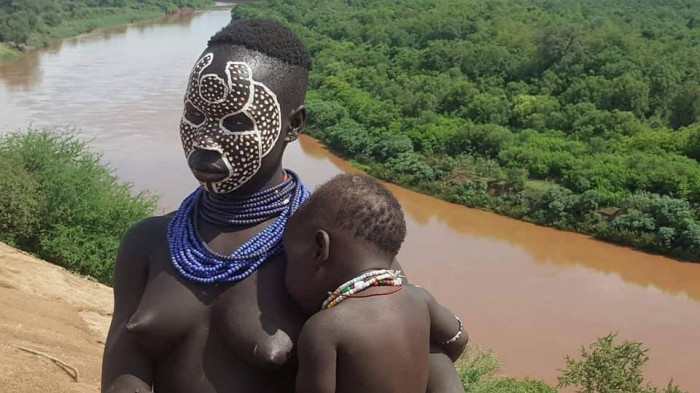
Day 13 - Turmi – Karo Village – Omorate
Turmi is our new base as we explore the region and meet the different tribes who share this valley but live a life uniquely their own. The Karo are traditionally pastoralists, and are famous for their flamboyant hairstyles and body painting. The men have tight hair buns, paint their bodies with chalk and wear colourful facemasks, while the women dye their hair with ochre. Then drive to the quirky town of Omorate, and we cross the Omo River by local boat to visit the Dassanech people, where Bruce Parry of ‘Tribe’ spent some time. Then we will witnessed the extraordinary Bull Jumping Ceremony where a naked man jumps from the back of one bull on to another as part of an initiation rite.
Overnight Lodge (B, L, D)

Day 14 - Turmi – Konso
Leaving Turmi head north-east towards Weyto, home to Tsemai and Arbore peoples. These people are mainly farmers and pastoralists, tending to their herds and growing sorghum and maize and supplementing it with honey. From here cross the Weyto Valley and head for Konso. The Konso are known for their tradition of Konso Waga, a warrior worship revolving around the carving of wooden effigies and they have been likened to the Dogon of Mali in this respect.
Overnight Lodge (B, L, D)
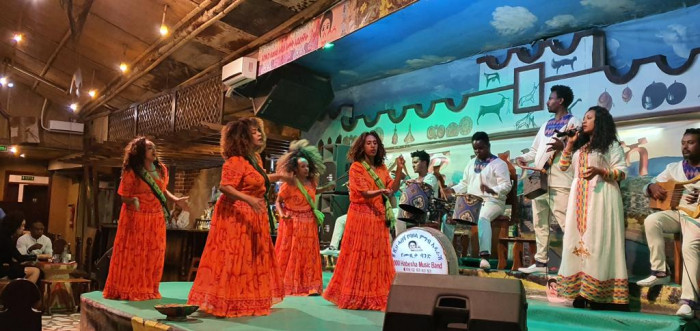
Day 15 - Konso – Arba Minch – Addis Ababa
In the morning after relaxed breakfast drive for 1:30 hour to Arba Minch then fly back to Addis Ababa.
*Optional shopping in the evening you will attend a folkloric dinner where you will have a chance to taste several national dishes and watch dances of the various ethnic groups of Ethiopia. The traditional coffee ceremony will also be served. Then according to your departure schedule, you will be transferred to the airport.
(B, L, D)
Please Wait, Processing Submission.
Do not refresh or leave this page until loading complete.

